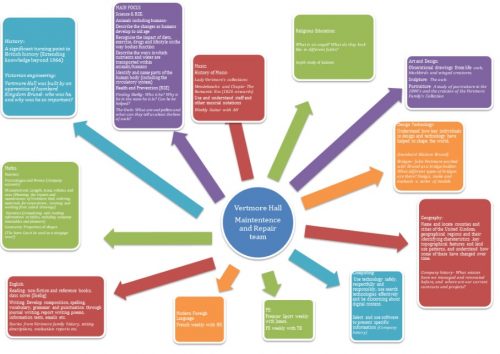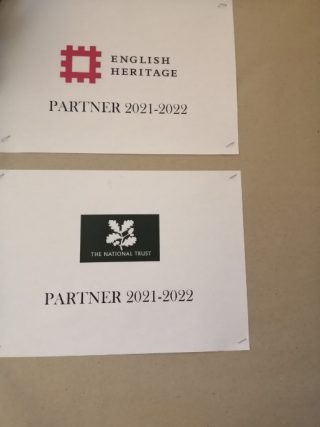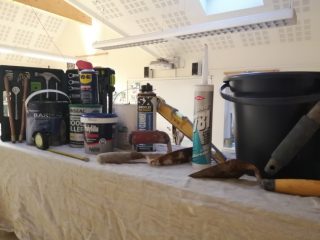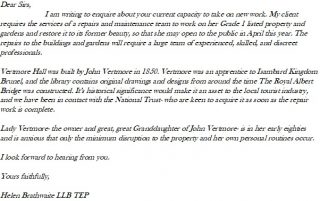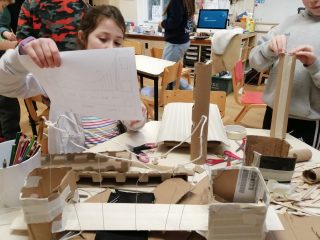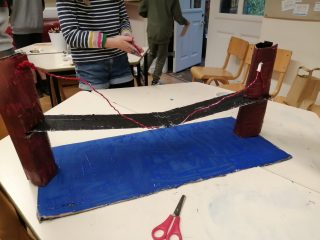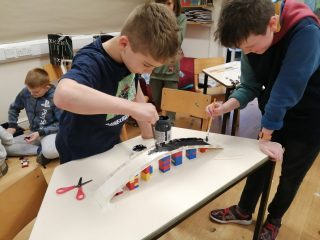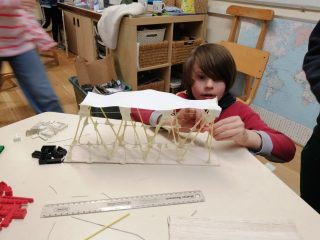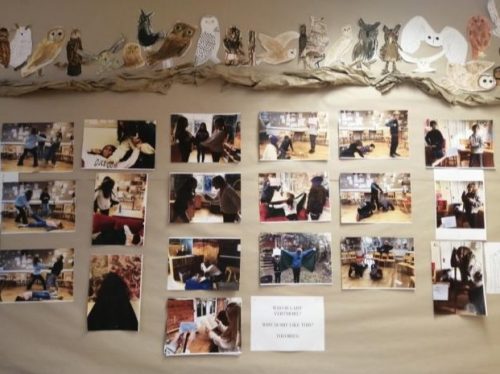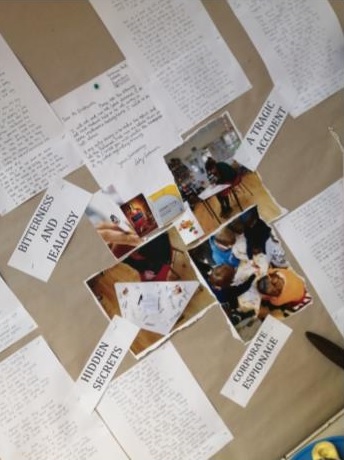Week One & Two
Pupils enter the room and immediately begin their conjecture as to what expert role they will take on this term, and where it might take them…
The ‘clues’ around the room are noted and discussed, and we collectively decide on ‘Repair with Care’ as our company name. We are a UK based team of repairs and maintenance experts, who specialise in historic buildings and country estates. We work closely with the National Trust and English Heritage.
Using the Imacs and Ipads we familiarise ourselves with both the National Trust and English Heritage websites. We co-create our company history of UK locations where we have carried out work. These range from lighthouses in Pembrokeshire, to abbeys in Derbyshire, to castles in Suffolk. Pupils write entries in the company portfolio, detailing the work. They also include images of the sites, and testimonies from the owners/trustees. These are plotted onto a UK map at the team’s ‘headquarters’.
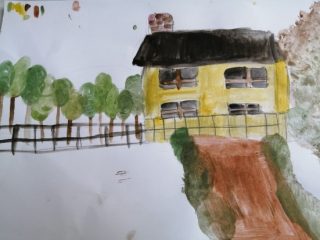
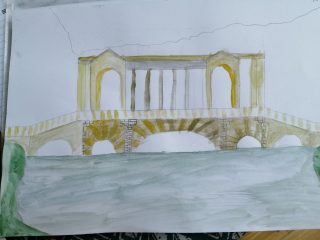
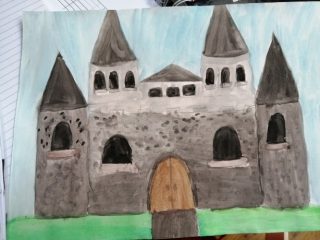
We receive a letter from Frost & Co Accountants, Plymouth. It reads:
Pupils immediately begin to raise questions.
Why doesn’t Lady Vertmore write to us herself? Why the accountants?
What exactly needs doing? Will be able to get all the materials (BREXIT)? Will there be enough time to complete the work? Why can’t it just be knocked down and rebuilt?
Who was Isambard Kingdom Brunel? Was he important? What about the drawings and designs in the library? What are they of?
What are Lady Vertmore’s ‘personal routines’? If she wants the work done- why is she concerned about disruption?
A meeting with Helen Brathwaite is scheduled for first thing Monday morning, and we hope to find out more.
Meanwhile, we create Vertmore Hall and its surrounding land and buildings. We calculate the perimeter of the property and scale the map we have created.
Week Three
Our meeting with Helen Brathwaite takes place. She presents us with a floor plan of Vertmore Hall and details the repairs our team will need to make. We learn that Lady Vertmore has been left with no choice but to renovate the property; if she wishes to stay there, it must open to the public in order for her to have an income to live on. We also learn that there is likely to be further work for the company once the National Trust become involved, as they are keen to develop the site.
The team remain concerned about whether we will be able to complete the vast amount of work in time for the April opening- many are aware of recent delays and shortages due to the current lorry driver situation. Will the materials we need be available when we need them? We decide our priority should be compiling a list of materials we will require- so that we can begin to make a schedule of works and find out what is possible- and what is not.
We use the floor plan to make scaled drawings of Vertmore Hall. We learn about perimeter and area so that we are able to accurately measure up for materials. A reference wall of all dimensions is created for our site office.
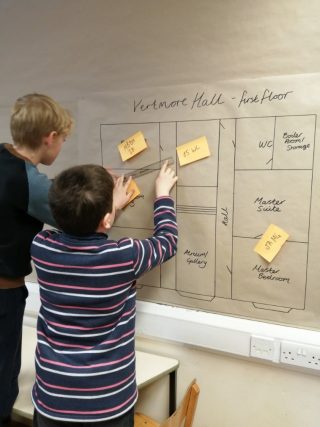
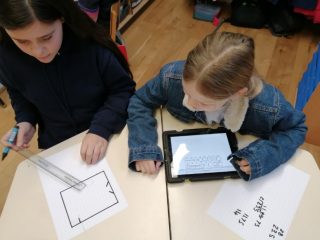
Later in the week we make our first site visit. In role as the team, we explore the run-down house. We speak our senses and describe our surroundings. Later we assume the role of the walls of Vertmore Hall and speak our reactions to having people walk our halls once more. Some exquisite writing emerges following this.
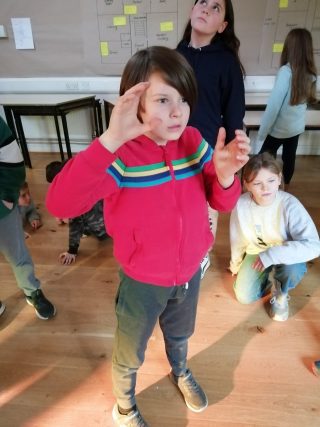
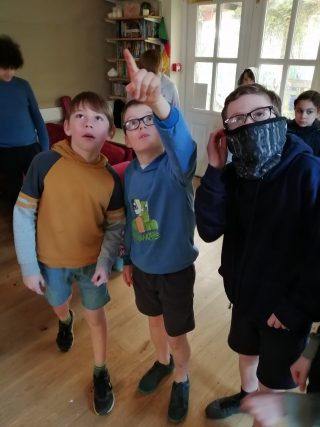
Out of role we conduct some research into the Royal Albert Bridge, on which Lady Vertmore’s father worked. We learn about Isambard Kingdom Brunel and some of his achievements.
Week Four
Our first site visit to Vertmore hall left us with questions about its history. When pupils assumed the role of the walls we heard of loneliness, neglect, and pain from the house’s past.
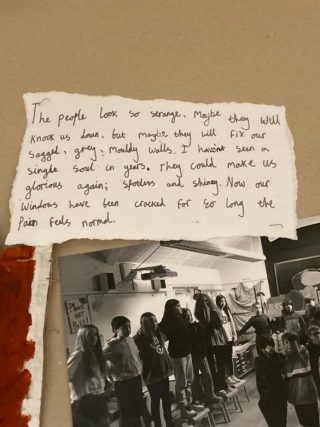
We know that the man who built Vertmore Hall was an apprentice bridge builder, and that he worked on the Royal Albert Bridge with the famous Victorian engineer Brunel. Out of role we conduct research on bridges; what different types there are, how they work, and their uses. We create the catalogue of John Vertmore’s original designs, which are currently housed in the library of Vertmore Hall. We go on to build working models of these designs. They range from girder bridges to suspension bridges, to cantilever bridges- to name a few!
We continue to gather measurements and information in order to source materials. Having measured up the floorplan of the house and investigated finding the area and perimeter of the rooms and spaces within it, we now turn our thoughts to our schedule. We begin to create timetables for our repair work.
Week Five
We turn our thoughts to Lady Vertmore, and some of the questions we still have about her. Many pupils wonder why she doesn’t just sell up and use the money to fund a more comfortable lifestyle, somewhere she is looked after and safe- like a nursing home. They note that the sale of the house and land would likely mean she would be financially secure for the remainder of her days. Why stay? What’s keeping her at Vertmore Hall?
Pupils are invited to observe her, sat alone at a desk.
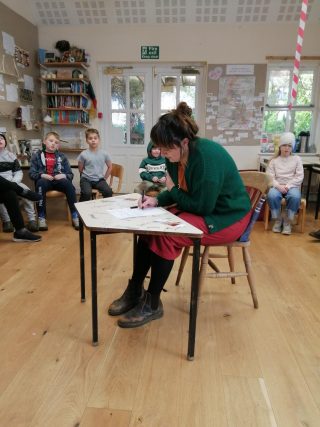
On her desk sits a glass of whiskey, a cigarette, and some aspirin.
Pupils look closely and make observations about her physical and mental state. We question her physical health- she looks like she is in pain; she is hunched over and clutching the joints in her hands. Why could this be?
Some question the presence of alcohol, aspirin and cigarettes- are these contributing to the pain? Are they causing it? Or- does she have them to cope with the pain?
Our class novel this term is Skellig, by David Almond. Pupils begin to make links. Does Lady Vertmore have arthritis like Skellig? Is this why she is taking aspirin? Could she be an angel? Is this why the walls of the house spoke of the pain it had gone through? The room explodes with theories and potential lines of enquiry! We note them down and resolve to explore them as soon as we can.
Out of role we learn about the impact of different factors on the human body- including drugs, diet, exercise.
We begin to write accounts from the perspective of Lady Vertmore, sitting alone in her home.
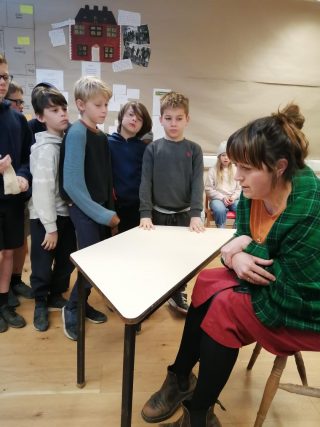
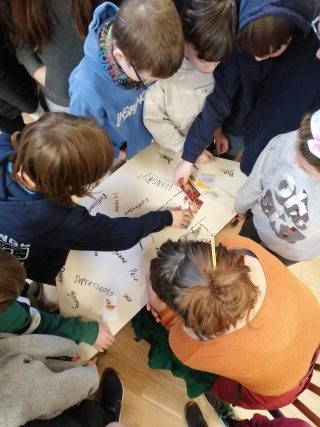
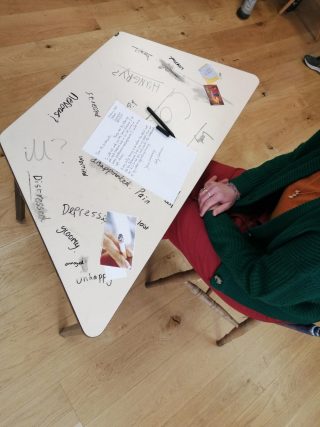
We complete our schedule of works and staff timetable, and consider contingency plans should any of the materials not arrive in time.
“I lay here alone, my hands shaking with pain. Depressing thoughts fill my mind with darkness. I do not understand what happened to me. I used to be powerful, unique. But now look at me! My hair is grey, knotted and greasy. My face is wrinkled; shattered with tears. I am lonely, I am not who I used to be.
I remember that day- darkness didn’t follow me back then. I was only seven years old when my father laid the first bricks of Vertmore Hall…”
We also consider her need for aspirin and the suggestion that she is suffering from arthritis. This leads us to study the skeletal system in detail and locate potential sites of pain. We create an ‘x-ray’ using detailed observational drawings.
Later we decide to explore a suggestion made by Dylan, Enzo, Jamiro and Isaac- that Lady Vertmore is ‘Joy’ from Skellig (our class novel). In the story, Joy is the sister of Michael, who as an infant suffered with a heart condition which resulted in her having surgery. In the story it is suggested that Skellig plays a role in ‘healing’ baby Joy when she reaches the brink of death.
The boy’s theory is that baby Joy was adopted by Lord and Lady Vertmore. We question why this might have been the case. Why are babies given up for adoption? What was the case in this situation? We explore this using dramatic convention and discover that Joy was left at the steps of an orphanage in 1939, when her parents left the UK to join the war effort.
Week Eight
We continue to co-create the narrative and explore key events in the life of Lady Vertmore.
Through the use of dramatic convention, pupils meet with Lady Vertmore (teacher in role). They are keen to explore the idea that she was adopted into the Vertmore family at the start of World War Two in 1939, and what ties her so inextricably to her crumbling home. Pupils question her carefully. We learn that her brother and parents were killed in a ‘tragic accident’ and that she has ‘been ill for a very long time…’. She refers to her ‘heart problems’, and confirms she was operated on as a young baby.
Out of role we examine her health closely. We create an ‘xray’ of her bones, and study the human skeletal system closely so that we may plot potential areas of arthritic pain. We take time to learn about the circulatory system. We begin by dissecting pig hearts (which we are told are closest in size to human hearts), and by viewing images in augmented reality. We learn about the main features and functions of the heart, lungs and diaphragm. Armed with the knowledge of what a healthy heart should look like, we spend time discussing what was (or still is), the issue with Lady Vertmore’s heart. Rosie suggests it could be a form of tumour blocking one of the main arteries. Enzo suggests a congenital defect in one of the ventricles which makes it smaller than average- meaning less oxygen is carried around the body in the blood.
We use drama to explore Rae’s suggestion. That Lady Vertmore has an atrial septal defect, or a hole in the heart, which was repaired as a baby but has now reopened.
Some pupils are resolved to learn more about her relationship with ‘Skellig’, and the significance of the owls which are nesting in the barn. We are left with more questions than answers on this following our episode meeting Lady Vertmore, and feel that she is holding back when questioned. She will only say that the creature ‘keeps her safe’, and is her friend. We visit a local owl sanctuary in order to learn more about these birds. We dissect owl pellets and examine our findings. We compare the human digestive system to that of owls.
